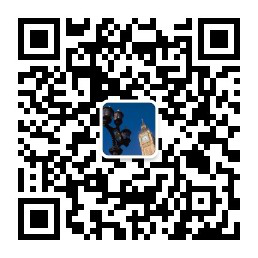On Translation of Tourist Material [6]
论文作者:马锦英论文属性:短文 essay登出时间:2009-04-02编辑:黄丽樱点击率:35820
论文字数:7325论文编号:org200904022048411653语种:英语 English地区:中国价格:免费论文
关键词:tourist materialslanguageculturetranslationDifferent
Such as Greeting Visitors is most famous. It extends outward two long arm-like branches, as if welcoming you from afar. If you want foreigners to have the same sentiment with us, you may add the annotation to the cultural meaning of “pine”.
Due to the differences between the western culture and the eastern culture, a translator should employ various devices, which will be discussed in the last part, to meet foreigners’ needs.
4.3.4.2. The Translation Concerning Culture of Tourist Object
Tourist scenery is the source of the transmitted message. Tourist scenery is generally divided into two kinds: natural scenery, and cultural and historic relics. An American famous scholar Newb once profoundly pointed out: “Scenery, it is not so much as a form outlook provided by nature as of cultural heritage and social value.” In China, natural scenery has deeply taken on the characteristic of “man-made incarnation”. The natural scenery has been permeated with historic relics. The saying “
essays become famous because of its scenery; and scenery becomes famous because of its essays.” is just denoting such a case. The well-known Hanshan Temple used to be commonplace until poet Zhangji in the Tang Dynasty wrote the noted poetry Mooring by Fengqiao at Night. It was this poem that made this place unprecedented famous.
Travel is an aesthetic activity. Visitors view the scenery with their own cultural background. In China since ancient time, some men of letters when enjoying the beautiful scenery, inspired by the numerous and famous mountains and rivers, relics and legends, wrote many noted poems and travel notes and made inscriptions, leaving us a great literary works. And these man-made descriptions, attaching themselves to static natural scenery, have formed a whole, which brought in the result that the natural scenery had been stamped with the man-made brand. Therefore, it is not strange at all to meet with lots of quotations of the classics and the poetry in tourist introduction. However, it presents a tough task to translation. Translators are not merely introducing the natural scenery, they are factually facing with cultural problem. To foreign nations, these highly condensed cultural message, either alien or different, or conflicting have constituted blank in understanding and obstacles in communicating; yet for translators, they have no way to avoid it.
Form the analysis above, we can notice that foreign readers are quite different from our Chinese readers, yet they are all exposed to the same object—tourist scenery. And translation just serves as the medium that transmits message from source to receptors, making readers of target language have the same effect with readers of source language. Therefore, Nida’s theory is naturally employed.
5. Suggested Methods for the Translation of Tourist Materials
5.1 Addition
Additions are used when background information like names of persons or places of historical incidents, literary classics is mentioned in tourist material. As Chinese readers may know them well, there is no need to explain them in the Chinese materials, yet to foreign visitors it is necessary to make additions to help them understand the content better.
Example1:
西域
The Western Regions (a Han Dynasty term for the area west of Yumenguan Pass, including what is now Xinjiang Uygur Autonomous Region and parts of Central Asia)
If such an addition is omitted, foreigners may take it for granted that 西域 is a geographical name.
Exampl
本论文由英语论文网提供整理,提供论文代写,英语论文代写,代写论文,代写英语论文,代写留学生论文,代写英文论文,留学生论文代写相关核心关键词搜索。

 英国
英国 澳大利亚
澳大利亚 美国
美国 加拿大
加拿大 新西兰
新西兰 新加坡
新加坡 香港
香港 日本
日本 韩国
韩国 法国
法国 德国
德国 爱尔兰
爱尔兰 瑞士
瑞士 荷兰
荷兰 俄罗斯
俄罗斯 西班牙
西班牙 马来西亚
马来西亚 南非
南非






